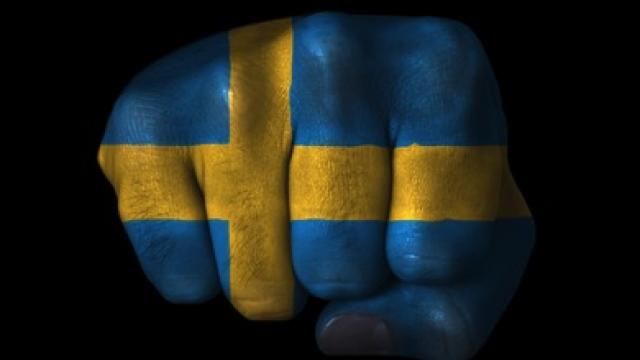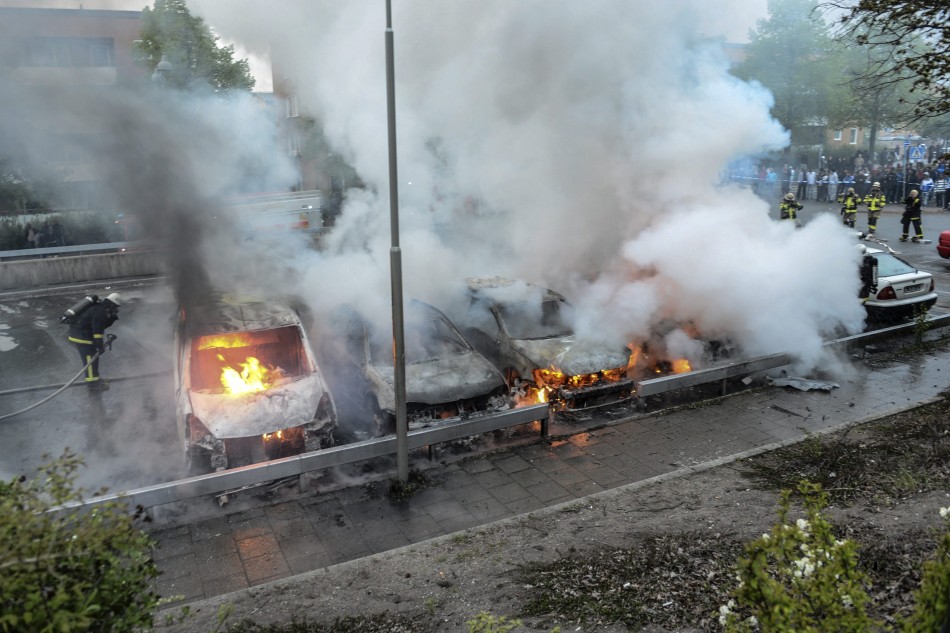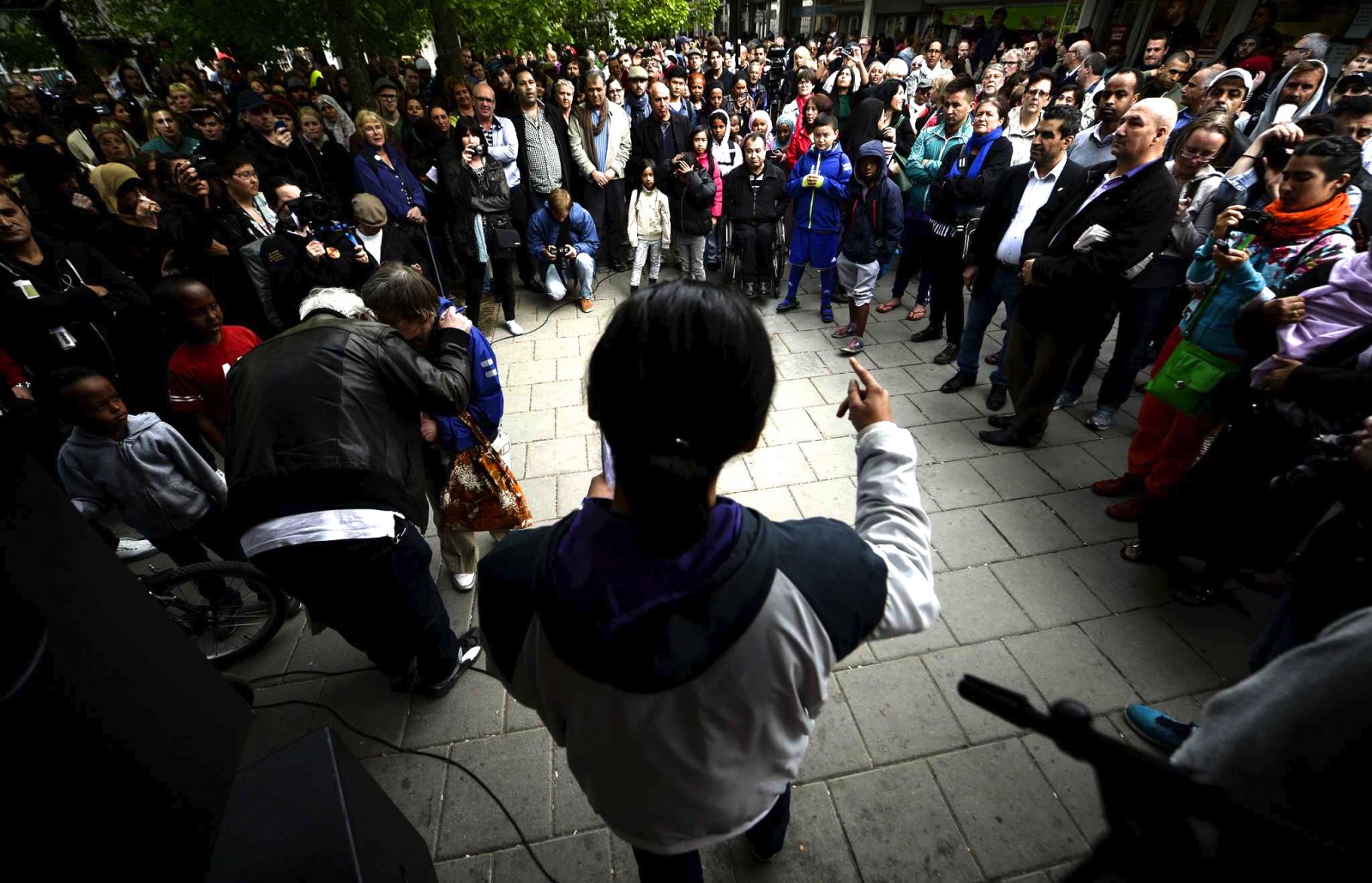
Last week, young people in several Stockholm suburbs rioted for six consecutive nights, throwing stones, breaking windows, torching cars, clashing with police and setting building ablaze, in Sweden’s worst scenes of disorder in years.
Were they the result of social exclusion? Growing disparities? Unemployment? Or a reaction to the police’s brutality and racism? It’s difficult to point the finger at what, exactly, led to the riots in the Swedish suburbs: It could be any of these reasons, or, as is much likelier, a subtle combination of all of them.
Two things, however, appear to be clear. The first is that the violence was sparked by the lethal police shooting of a 69-year old, knife-wielding man, in the suburb of Husby, which became the epicenter of the riots. Although the police said its office had fired in self-defense, the shooting has triggered accusations of police brutality. The second is that the youth from these predominantly immigrant suburbs are very, very angry.
The riots in Stockholm are reminiscent of similar unrest seen in recent years in other major European cities like London and Paris. What makes the events in Sweden so remarkable, though, is that the country has long been considered as a model for tolerance, with its generous social welfare state, its excellent daycare system and its unique parental leave policies. In short, the ‘Nordic model,’ as it was dubbed, was more commonly associated with progressive policies than with cars set ablaze.
And so the media everywhere was quick to express its surprise at this model country suddenly suffering the same fate as others in Europe. They alluded to Prime Minister Fredrik Reinfeld’s policies as one of the possible explanations.
He came to power in 2006, ending the long-standing dominance of social democrats and vowing to fix the welfare system. He has since cut income taxes and reined in benefits. As a result, the welfare system has been clearly less generous — while at the same time, the country has not been successful in integrating immigrants into the workforce.
Unemployment and Poverty
The media has also evoked housing segregation and rampant unemployment to explain the unrest. Indeed, while average living standards are still among the highest in Europe, successive Swedish governments have failed to substantially reduce long-term youth employment and poverty, which have affected immigrant communities worst.
Around 15 percent of the population is foreign-born — unemployment among this group stands at 16 percent compared with 6 percent for native Swedes. In Husby, around 80 percent of the 11,000 residents are either first or second generation immigrants.
Youth unemployment is high and nearly 50 percent of the kids finish junior high with grades too low to get into high school. The country has seen the biggest surge in inequality of any OECD country over the past 15 years, according to a recent report.
In other words, Sweden is not as equal as some analysts try to paint it. Just like in other European countries, jobs applicants frequently are rejected because of their last name, because of how they look, or even because of where they live. As a result, they often feel trapped, locked into their circumstances with no possibility of a better future.
Much of the native Swedish population used to be proud of its openness and tolerance in accepting foreigners, but it now looks as though significant segments of society are having second thoughts. Foreign-born citizens speak about segregation increasing all the time and happening fast. They also denounce police racism: 15-year-old Sebastian Horniak said that during the riots he saw police firing warning shots in the air and calling a woman a “monkey.”
Horniak’s claims of racist remarks were backed up by the organization Megafonen, which represents citizens in Stockholm’s suburbs. One of its representatives, Quena Soruco, said she heard the police use abusive words such as “rats” and “Negroes.” Local youths also say they are often the subject of unnecessary identity checks from police.
Failed Multiculturalism?
Unemployment, a poor housing situation, disrespect from the police: In such circumstances, it takes just a spark to start a riot — that was the shooting. Sweden is now facing a debate over whether immigrants and their families are being marginalized and whether multiculturalism in general is working. This is the same debate that raged two or three years ago in Germany and the United Kingdom, when Angela Merkel and David Cameron both reached the same conclusion: Multiculturalism has failed.
What is meant by ‘multiculturalism,’ however, is not clear. The term appeared somewhere in the early 90s to replace ‘assimilation’ and ‘integration’ policies, which had come to be seen as politically incorrect — these policies referred to the dominant political project of the 20th century, whose aim was to build a cohesive nation-state with a single, homogeneous national identity.
States feared the recognition of ethnic, religious and linguistic differences would lead to social fragmentation and prevent the creation of a harmonious society. As a result, minorities and immigrants were supposed to abandon their cultures.
But governments soon came to realize that attempts to suppress and assimilate diverse cultural groups were often ineffective, heightening tensions – apart from the fact that they are also morally problematic. And so they replaced integration policies with a new concept called multiculturalism. The word is generally taken to mean allowing different (religious, ethnic, etc.) communities to develop independently alongside that of their hosts.
When Angela Merkel, in her famous 2010 speech, said that multiculturalism had “utterly failed,” she explained that too little had been required of immigrants in the past and she stressed that they should learn German in order to cope in school and take advantage of opportunities in the labor market. She added that the onus was on immigrants to do more to integrate into German society. Though Merkel made it sound like multiculturalism was a specific policy, in reality there was none. ‘Multiculturalism’ was just a patchwork of rhetoric and aspirations, with little concrete initiative taken by the state.
In other words, while the name had changed, the idea had remained the same: Foreign-born people should integrate; they should adopt the rules and the beliefs of the hosting country.
‘Multiculturalism’ had been developed as just another concept by nations who try to represent themselves as transcendentally homogeneous in spite of their actual heterogeneity. And Sweden now wants to take up the debate on immigrants again.
But the reality is that rioters in Sweden – like elsewhere in Europe – have no ethnic or religious demands; they want jobs, better housing, good schools and to be treated with respect. This is the anger of people who have not found a place in society, and these are demands of inclusion; what they are asking is to be part of their host societies. They want integration, i.e. exactly what the hosting countries also claim to want. This has nothing to do with culture and everything to do with discrimination.
The State’s Responsibility
And there the State has a responsibility. In law, discrimination has two meanings: treating people in the same situation differently; and treating people in different situations, the same. To give a concrete example, everyone admits that blind people have special needs; not providing them with special arrangements to meet these needs means they are being discriminated against.
The State has a duty to ensure that all citizens – regardless of religious faith, ethnic descent or cultural tradition – are able to enjoy their rights. Given the situation in some of Stockholm suburbs, it looks like Sweden, just like other countries in Europe, has not entirely fulfilled its obligations.
Just because there nearly a hundred different nationalities living in Swedish suburbs does not make it an integration or a migration issue. There is a tendency in Europe to explain everything as a cultural problem without reference to sustained and structural inequality. Instead, the immigration debate and its conjoined twin, the integration debate, are always ongoing but never really happening. Integration and assimilation policies are a fallacy: Who must integrate? When is he integrated? Who decides if he is? It is based on the fantasy that all the people living in a country should be the same.
Instead, what is needed is the recognition of the shortcomings of historical nation-building exercises. National cohesion does not require the imposition of a single identity and the denunciation of diversity; ethno-cultural diversity is part of all human societies. What is needed is equal treatment and equal opportunities for all. What is needed is the state to take responsibility for all its citizens, even and most of all if they happen to be disadvantaged.
3 WAYS TO SHOW YOUR SUPPORT
- Log in to post comments














